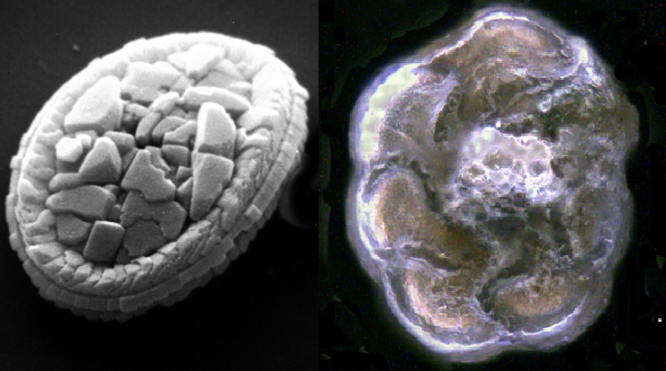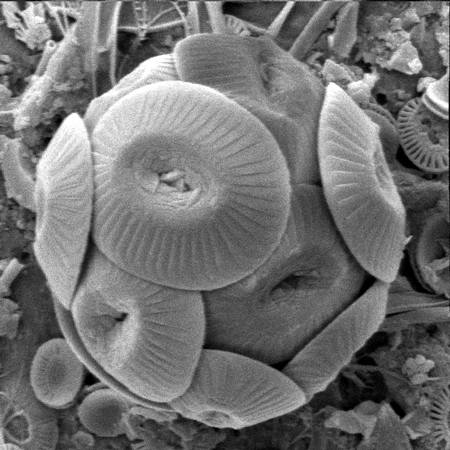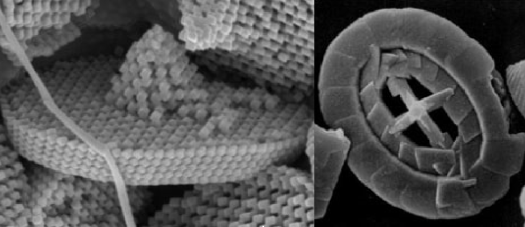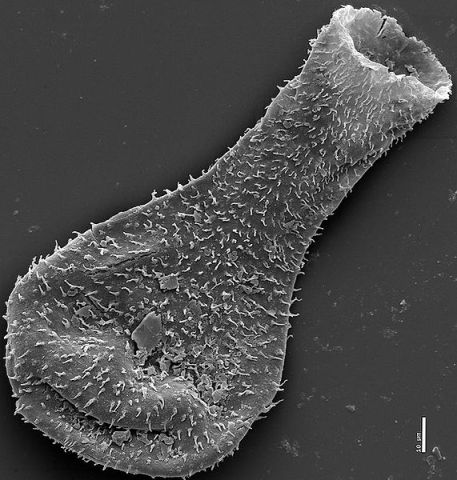The Chicxulub asteroid impact was the final straw that pushed Earth past the tipping point. The K-Pg extinction that followed the impact was one of the five great Phanerozoic mass extinctions. The impact released an estimated energy equivalent of 100 teratons of TNT and produced high concentrations of dust, soot, and sulfate aerosols in the atmosphere. The dramatic decrease of sunlight that reached the Earth surface caused a drastic short-term global reduction in temperature. This phenomenon is called “impact winter”.
Cold and darkness lasted for a period of months to years. Photosynthesis stopped and the food chain collapsed. Three-quarters of the plant and animal species on Earth disappeared. Marine ecosystems lost about half of their species, and freshwater environments shows low extinction rates, about 10% to 22% of genera.
This difference in extinction rates between marine and freshwater ecosystems could be explained by differential effects of an impact winter on marine and freshwater biota and the difference in the use for detrital foods.
Three factors can be associated with the impact winter in marine and fresh water enviroments. First, starvation caused by the stop of photosynthesis. Second, the loss of dissolved oxygen. Third, the low temperatures. The flux of organic detritus to the sea floor also declined abruptly and remained low for about 3 Myr after the impact.
Marine extinction rates were greater among pelagic than benthic organisms. Calcareous nanoplankton (primarily the coccolithophores) and planktonic foraminifera had the highest extinction rates among the marine plankton, possibly because they commonly lack cysts or resting stages. About 70% of planktonic foraminifera became extinct at the K/Pg boundary. The food webs supported by plankton were severely affected. For instance, ammonites were plankton feeder and they, like mosasaurs, plesiosaurs and pliosaurs that fed on them, became extinct at the K-Pg boundary.
In case of freshwater communities, they were adapted to rapidly changing environments. For instance, starvation can be offset by dormancy, which is much more common among freshwater than marine organisms. Dormancy could have lowered extinction rates in inland waters compared to marine waters.
Because the late Cretaceous climate was warm, a major challenge for aquatic organisms, especially in inland waters, may have been the persistence of low temperatures. Inland waters had an advantage for preventing extinction caused by prolonged cold: the presence of thermal refugia in the drainage networks of inland waters derived not only from geothermal waters, but also from groundwater.
The abundance of refugia combined with greater adaptation to stressful conditions may explain lower extinction frequencies in freshwaters than in marine waters. Even when mortality within all taxa may have been equal to or even greater in freshwaters than in marine waters, the factors that protect some survivors against extinction are more evident in the freshwater environment.
It seems clear that the terrestrial and marine extinction were separated in time by a matter of months to years. These extinctions had two different mechanisms: an impact winter in the marine environment and a heat pulse and subsequent fires in the terrestrial environment, although an impact winter would also affect the terrestrial environment. A more comprehensive analysis also shows three separate spatial domains (terrestrial, marine, and freshwater), which provide us a more understandable picture of the K-Pg extinction.
References:
Douglas S. Robertson, William M. Lewis, Peter M. Sheehan and Owen B. Toon, K-Pg extinction patterns in marine and freshwater environments: The impact winter model, Journal of Geophysical Research: Biogeosciences, JUL 2013, DOI: 10.1002/jgrg.20086.
Schulte, P., et al. (2010), The Chicxulub asteroid impact and mass extinction at the Cretaceous-Paleogene boundary, Science, 327, 1214–1218, doi:10.1126/science.1177265



























